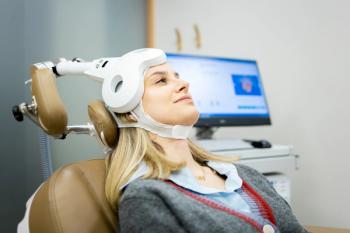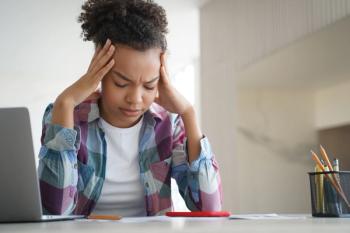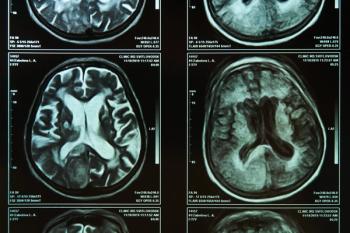There is a reason why so many holidays occur during the fall and winter months. For many, these light-filled festivities serve as a symbol of hope, something to look forward to when darkening days threaten to bring a bout of seasonal depression.
With time changes, shorter days, and inclement weather driving people indoors, seasonal depression affects about 5% of adults annually and can last up to 40% of the year.1 Interestingly, it is 4 times more common in women than men.2 Also known as seasonal affective disorder (SAD), this recurrent major depressive disorder has a pattern of seasonal emergence and remission.
SAD is thought to be mainly caused by a lack of sunlight. More than 50% of the human population lives in the northern temperate zone between the Tropic of Cancer and the artic region to the north. As a result, SAD tends to peak from December through February, often coinciding with the time of the year when shorter days means less sun.
Although the intention of the holidays is to bring us closer to friends and family, for many it is also a very stressful time. Taking on too many commitments, interactions with family, travel, and disrupted schedules can heap on the stress and make SAD symptoms even worse.
Part of the challenge with SAD is its seasonality, which can catch people off guard if they are not usually depressed. By teaching patients how to identify and address SAD, clinicians can give patients a valuable gift.
What Is SAD?
Sidebar. The Effects of Daylight Saving Time
-Spring forward, fall back. Each year, 1.6 billion people change the time on their clocks to chase the sun during fall and winter months.9
-Benjamin Franklin is widely credited with inspiring daylight saving time when he mused, “Oblige a man to rise at four in the morning, and it is probable that he will go willingly to bed at eight in the evening.”10
-William Willet, a builder walking the streets of London, took this one step further in 1907 when he wrote “The Waste of Daylight,” a manifesto on how no one was taking advantage of the early morning sun.10
-It was not until World Wars I and II when the need to conserve coal and energy spurred the United States and other countries to adopt light-saving measures. Because it was met with great resistance, an important compromise was reached. Clocks would be turned ahead 1 hour in the spring to give people ample opportunity to enjoy the sun. In the autumn, daylight saving time would end as clocks fell back 1 hour.
-While the concept of daylight saving seems to have allowed the optimization of industrial needs, changing clocks in the fall can take a toll on your mental health and may exacerbate mental health conditions. One study reviewed 185,419 hospital contacts following the transition to standard time. It found there was an 11% increase in the rate of unipolar depressive episodes, which dissipated over 10 weeks.9
-This time change can disrupt circadian rhythms, including the sleep-wake cycle. It can take some people weeks to get back to healthy sleep patterns. For most Americans, a 9am-to-5pm work schedule is standard, which means it is already dark when the workday is through. This can contribute to decreased sunlight exposure and an increase in sedentary lifestyles.
-To adjust to these time changes, health professionals suggest going to bed incrementally earlier in the weeks leading up to the time change. Sticking to a schedule, avoiding naps, and limiting caffeine and alcohol can help smooth out this transition.
SAD was first identified in 1984 by Norman Rosenthal, MD, along with other colleagues. Upon moving from his home of South Africa to the United States, Rosenthal noticed he felt less productive and more lethargic during the winter months. Subsequent research noted that the further people lived from the equator, the higher the rates of SAD. In Florida, for example, only 1.5% of people studied experienced SAD, while it affected close to 10% in New Hampshire.2
Symptoms of SAD most commonly include a persistently low mood and a lack (or perceived lack) of energy. People experiencing seasonal depression may feel more irritable than usual, cry easily or frequently, experience lethargy or tiredness, tend to be socially withdrawn or disengaged, and may experience difficulties concentrating. Those affected also tend to sleep more than usual, experience cravings for sugars and carbohydrates, report being less active, and may gain weight.
Winter depression is the most common form of SAD, with symptoms emerging in the fall and persisting through the winter months. Its milder form is known as “winter blues.” Less common is summer depression, which can occur in the spring and summer months. Symptoms during this time can include insomnia, loss of appetite and weight loss, and increased psychomotor activity, often resulting in agitation, restlessness, or anxiety.
In either form, cases can become severe and cause significant impairment of function. Like all types of depressive disorders, suicidal ideation may occur.
Lack of sunlight is the main culprit of SAD, but there are other causes. A series of cloudy days, spending time mostly indoors, and adjusting to the hiccup of time changes are just some of the situations that can cause SAD to proliferate.
How SAD Affects the Body
The exact cause of SAD has not been confirmed, but scientific research indicates several causal factors.3
Low serotonin activity in the brain is thought to be a cause of SAD. Low sunlight leads to higher levels of the serotonin transporter protein, which can lead to a decrease in serotonin activity in the brain. In the summer months, sunlight naturally keeps these protein levels low.3
Lack of sunlight can also spur an overproduction of melatonin, a hormone created by the pineal gland that regulates the sleep-wake.3 Decreased exposure to sunlight can increase melatonin levels, which can cause increased sleepiness and lethargy.
These disruptions in serotonin and melatonin levels can throw off a person’s circadian rhythm. People with seasonal depression tend to have greater difficulty adjusting their internal clocks to seasonal changes in day length, and this can affect their sleep, mood, and behavior.
Vitamin D levels are also affected by light. Vitamin D is believed to affect serotonin levels, and a deficiency is related to clinically significant depressive symptoms.3 More accurately a hormone, Vitamin D is found in certain foods and is also produced by the skin when exposed to sunlight.
People living away from the equator in far northern and southern latitudes are more at risk for developing SAD. In northern countries, 2% to 9% of people experience SAD, with 15% to 20% experiencing the milder “winter blues.”4 Actual prevalence could be higher due to potential underdiagnosis or underreporting.
SAD is much more common in women, likely related to changes in estrogen levels.5 It also appears more frequently in those with a family history of depression as well as younger people. The onset of seasonal depression peaks between 18 and 30 years old.6 Those engaged in shift work, such as health care workers or law enforcement agents, may be at a particularly high risk.
The prevalence of SAD, however, is not without its critics. One 2008 study pointed out that residents of Northern Norway live without the sun for 2 months during the winter, but do not “spontaneously complain” about depression during this time.7 Another study in 2016 examined US data from a cross-sectional survey by the Centers for Disease Control and Prevention.8 Authors said they were unable to find any significant increase in depression rates that could be attributed to a particular season.8 Despite this criticism, identifying cases of SAD is critical for helping people navigate the darkness of the fall and winter months.
How to Treat SAD
SAD is classified in both the ICD-10 and the DSM-5. For a diagnosis to be made, a person must experience depression during a specific time each year for at least 2 years. Once SAD has been diagnosed, there are several promising treatments to help reverse its effects.
Medication. Antidepressants remain a promising and viable treatment option for moderate to severe cases of seasonal depression.3 Although there are concerns about the side effects of these medications, there are several newer options available that have shown promise. Additionally, there are other nonmedication options available, such as neuromodulation, which are effective and may be better tolerated.
Psychotherapy and counseling. Psychotherapy can help significantly reduce the distress and impairment caused by symptoms of SAD. In cases of mild depression, it can be effective by itself or in combination with medications to treat moderate to severe depression. Most of the existing research evidence supports the use of cognitive behavioral therapy.
Other modalities of psychotherapy, including mindfulness-based stress reduction, positive psychotherapy, interpersonal psychotherapy, and brief problem-focused psychotherapies, can also be highly effective. These can empower a person to effectively manage or deflect away from unhelpful thoughts and emotions. It also can help them find successful ways to relax, preserve their ability to function, anticipate and prepare for potential emotional triggers, and see the light at the end of what might seem like a long, dark winter. Reemerging interest in complimentary modalities, including psychedelic psychotherapy, is also inviting greater research and focus.
Light therapy. Light therapy seeks to reverse the effects of diminished daylight by exposing a person to an artificial full-spectrum light. Light boxes are easily available, often without prescription, and usually recommended for use during morning hours.3 This is similar in composition to natural sunlight, but with ultraviolet light filtered out. Medical supervision is suggested to ensure the appropriate light intensity, as well as distance, duration, frequency, and timing. This will help avoid any unwanted effects, such as headaches, eyestrain, and, in rare cases, mania and suicidal thoughts. Light therapy is not recommended for people who take certain medications that may cause them to experience unusual sensitivity to light.
Vitamin D supplements. Preliminary clinical studies suggest that people with seasonal depression have insufficient (mild or borderline low levels) or deficient (significantly low levels) vitamin D levels, which are usually caused by a combination of reduced intake through diet, low sunlight exposure due to lifestyle issues or availability during winter/fall months or those engaged in night shift work. Researchers have suggested that daily supplementation with moderate to high dose vitamin D may prevent symptoms of seasonal depression or improve ongoing symptoms.3 Although rare, there is a small risk of adverse effects or toxicity developing with very large doses of vitamin D, so clinicians should work closely with patients and their primary care providers.
Lifestyle changes. There are many actions people can do on their own to mitigate the effects of SAD. Finding ways to reduce stress, increasing physical activity, and spending time outside can help shore up energy levels. Eating a diet that is high in protein, along with complex carbohydrates and vegetables, and avoiding fatty foods or simple carbs can also be beneficial. Traveling to sunny destinations has also been associated with helping with mood.
Other options. Complementary and alternative medicine options have gained popularity in recent decades due to increased awareness, research evidence, and a shift toward a more holistic approach to health care. Nutraceuticals, dietary and herbal supplements, mindfulness and meditation practices, yoga, acupuncture, and the traditional practices of Ayurvedic, Unani, or Chinese medicine may be useful.
Concluding Thoughts
Although the concrete causes of SAD are still elusive, SAD is a clinical condition that affects millions of people each year.
Several mechanisms may play a role in its emergence, with lack of exposure to light during the fall and winter months being the most notable. Symptoms may vary, but they tend to share similarities with other types of depression.
Timely identification and treatment can be very helpful; lifestyle modulation and adjustments can go a long way. Due to the nature of the condition and risk of being underdiagnosed or undertreated, mental health clinicians should be on the lookout for SAD when assessing referred patients.
Dr Singh is a psychiatrist and Regional Medical Director for Mindpath Health.
References
1. Traffanstedt MK, Mehta S, LoBello SG. Major depression with seasonal variation: is it a valid construct? Clin Psychol Sci. 2016;4(5):825-834.
2. Rosenthal NE. What is seasonal affective disorder? Accessed December 22, 2021. https://www.normanrosenthal.com/about/research/seasonal-affective-disorder/
3. Melrose S. Seasonal affective disorder: an overview of assessment and treatment approaches. Depress Res Treat. 2015;2015:178564.
4. Rosen LN, Targum SD, Terman M, et al. Prevalence of seasonal affective disorder at four latitudes. Psychiatry Res. 1990;31(2):131-144.
5. Partonen T. Estrogen could control photoperiodic adjustment in seasonal affective disorder. Med Hypotheses. 1995;45(1):35-36.
6. Seasonal affective disorder. American Psychiatric Association. October 2020. Accessed December 22, 2021. https://www.psychiatry.org/patients-families/depression/seasonal-affective-disorder
7. Hansen V, Skre I, Lund E. What is this thing called "SAD"? A critique of the concept of seasonal affective disorder. Epidemiol Psichiatr Soc. 2008;17(2):120-127.
8. Turner VS. Study finds “seasonal affective disorder” doesn’t exist. Scientific American. March 15, 2016. Accessed December 22, 2021. https://www.scientificamerican.com/article/study-finds-seasonal-affective-disorder-doesn-t-exist/
9. Hansen BT, Sønderskov KM, Hageman I, et al. Daylight savings time transitions and the incidence rate of unipolar depressive episodes. Epidemiology. 2017;28(3):346-353.
10. Daylight saving time 2021: when does the time change? Almanac. November 4, 2021. Accessed December 22, 2021. https://www.almanac.com/content/when-daylight-saving-time
Suggestion for Further Reading
National Center for Complementary and Integrative Health. 6 things to know about complementary health approaches for seasonal affective disorder. Accessed January 10, 2022. https://www.nccih.nih.gov/health/tips/things-to-know-about-complementary-health-approaches-for-seasonal-affective-disorder












